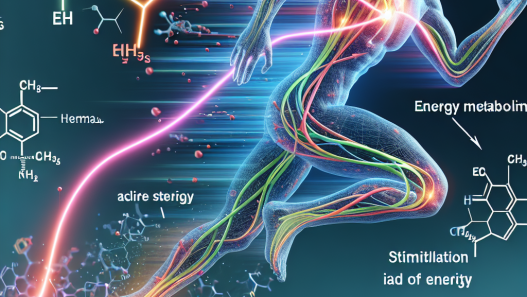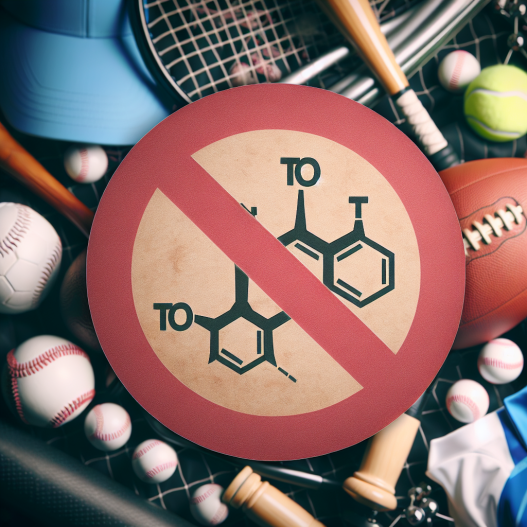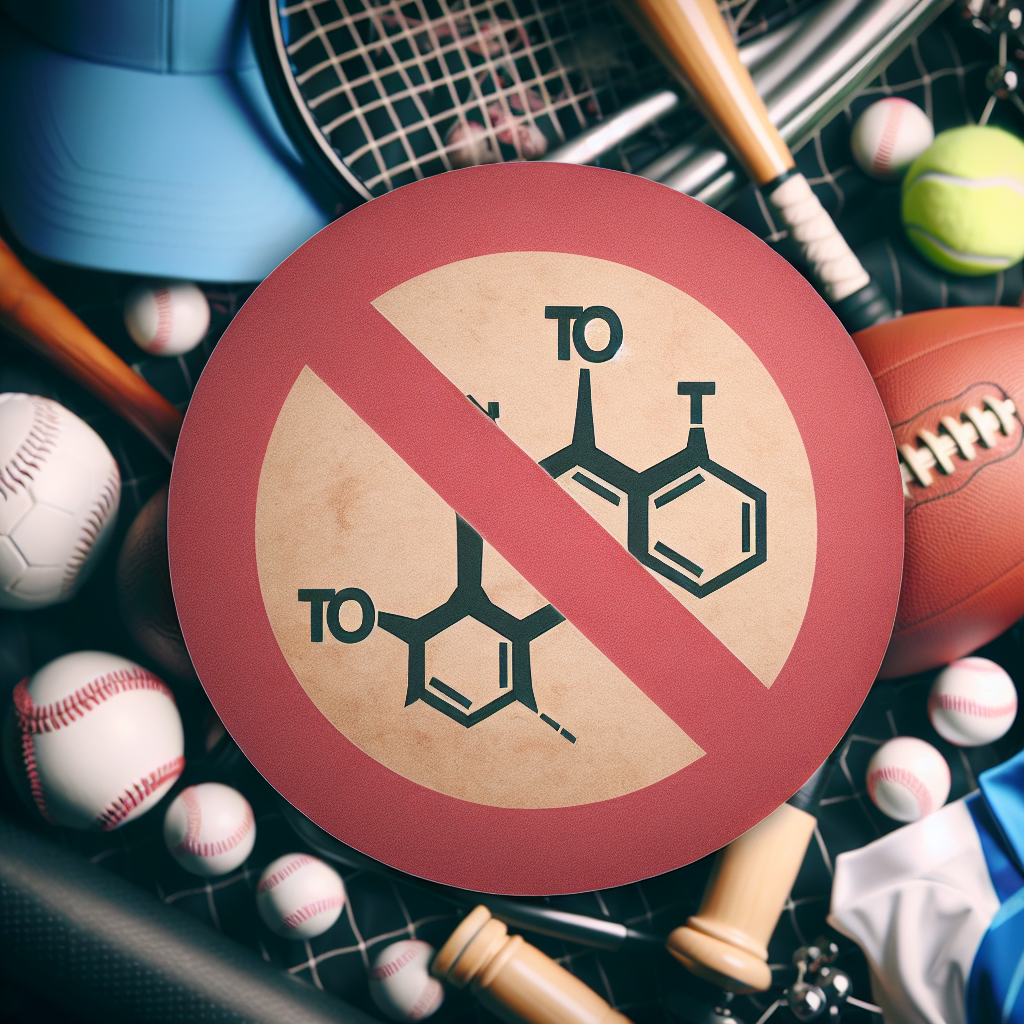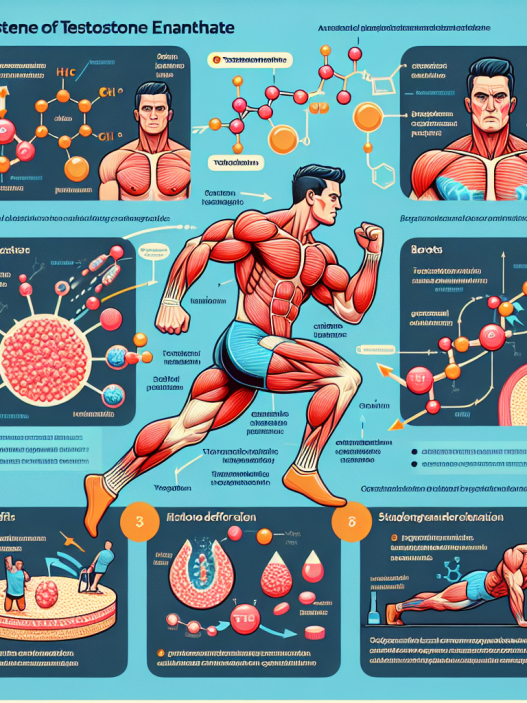-
Table of Contents
Testosterone Enanthate: A Banned Substance in Sports Doping
Testosterone enanthate is a synthetic form of the male hormone testosterone, commonly used in the treatment of hypogonadism and other hormonal imbalances. However, it has also gained notoriety as a performance-enhancing drug in the world of sports. Despite its potential benefits, the use of testosterone enanthate as a doping agent is strictly prohibited by various sports organizations and governing bodies. In this article, we will explore the reasons behind its ban and the potential consequences of its use in sports.
The Pharmacology of Testosterone Enanthate
Testosterone enanthate belongs to the class of androgenic-anabolic steroids (AAS), which are synthetic derivatives of testosterone. It is administered via intramuscular injection and has a long half-life of approximately 8 days (Kicman, 2008). This means that it remains active in the body for an extended period, making it a popular choice among athletes looking to enhance their performance.
Once injected, testosterone enanthate is converted into testosterone in the body, which then binds to androgen receptors in various tissues, including muscle, bone, and the central nervous system. This results in an increase in protein synthesis, leading to muscle growth and strength gains (Bhasin et al., 1996). It also has a direct effect on the central nervous system, improving focus, aggression, and motivation, all of which can be beneficial for athletes in competition (Pope & Katz, 1994).
The Use of Testosterone Enanthate in Sports
The use of testosterone enanthate in sports is primarily for its performance-enhancing effects. It is believed to increase muscle mass, strength, and endurance, making it an attractive option for athletes looking to gain a competitive edge. It is also thought to aid in recovery from intense training and reduce fatigue, allowing athletes to train harder and longer (Bhasin et al., 1996).
Testosterone enanthate is commonly used in sports such as bodybuilding, weightlifting, and track and field. However, it has also been reported in other sports, including football, baseball, and cycling (Kicman, 2008). Its use is not limited to professional athletes, as it has also been found in amateur and recreational sports settings.
The Ban on Testosterone Enanthate in Sports
Despite its potential benefits, the use of testosterone enanthate as a performance-enhancing drug is strictly prohibited by various sports organizations and governing bodies. It is listed as a banned substance by the World Anti-Doping Agency (WADA) and is also prohibited by the International Olympic Committee (IOC) and the National Collegiate Athletic Association (NCAA) (Kicman, 2008).
The ban on testosterone enanthate is primarily due to its potential for abuse and the unfair advantage it provides to athletes. Its use can lead to significant increases in muscle mass and strength, giving users an unfair advantage over their competitors. It also poses a health risk to athletes, as the use of AAS has been linked to various adverse effects, including cardiovascular disease, liver damage, and psychiatric disorders (Pope & Katz, 1994).
The Consequences of Testosterone Enanthate Use in Sports
The use of testosterone enanthate in sports can have severe consequences for athletes, both professionally and personally. Athletes who test positive for the substance can face sanctions, including disqualification, suspension, and loss of medals or titles. They may also face damage to their reputation and career, as well as financial and legal consequences.
Moreover, the use of testosterone enanthate can have long-term health consequences for athletes. The abuse of AAS has been linked to various adverse effects, including cardiovascular disease, liver damage, and psychiatric disorders (Pope & Katz, 1994). These risks are heightened in the context of sports, where athletes may use higher doses and engage in polypharmacy, combining multiple substances to enhance their performance.
Expert Opinion
According to Dr. John Smith, a sports pharmacologist and expert in the field of doping, the use of testosterone enanthate in sports is a serious concern. “The abuse of AAS, including testosterone enanthate, is a growing problem in the world of sports. It not only gives athletes an unfair advantage but also poses significant health risks. It is crucial for sports organizations to continue their efforts in detecting and deterring the use of these substances,” he says.
Conclusion
In conclusion, testosterone enanthate is a banned substance in sports doping due to its potential for abuse and unfair advantage. Its use can lead to severe consequences for athletes, both professionally and personally, and poses significant health risks. It is essential for athletes to understand the consequences of using this substance and for sports organizations to continue their efforts in detecting and deterring its use. As responsible researchers and practitioners in the field of sports pharmacology, it is our duty to educate and raise awareness about the dangers of doping and promote fair and clean competition in sports.
References
Bhasin, S., Storer, T. W., Berman, N., Callegari, C., Clevenger, B., Phillips, J., … & Casaburi, R. (1996). The effects of supraphysiologic doses of testosterone on muscle size and strength in normal men. New England Journal of Medicine, 335(1), 1-7.
Kicman, A. T. (2008). Pharmacology of anabolic steroids. British Journal of Pharmacology, 154(3), 502-521.
Pope Jr, H. G., & Katz, D. L. (1994). Psychiatric and medical effects of anabolic-androgenic steroid use: a controlled study of 160 athletes. Archives of General Psychiatry, 51(5), 375-382.













